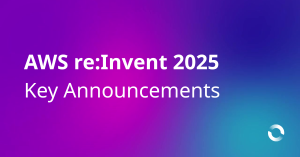Not all data strategies are created equal. Many organisations invest heavily in data tools and platforms but still struggle to turn information into actionable insights. The truth is, a strong data strategy isn’t just about dashboards or technology, it’s about alignment across people, processes, and systems.
Table of Contents
Here are the five key traits that make a data strategy truly effective:
1. Alignment with Business Goals (North Star)
A data strategy needs to directly help achieve the company’s main business goals (for example, reducing risks or increasing customer retention). It is about delivering measurable business value. Alignment ensures that data architects and engineers are working on solutions that directly impact revenue, profit, proactivity or risk reduction, rather than simply pursuing the latest technology trend.
In the context of data strategy, the North Star is a metaphor for the few, critical Key Performance Indicators (KPIs) or strategic objectives that the entire organisation and specifically, the data team is focused on improving.
- It is a guiding light: Like the North Star in navigation, it is the one constant, unambiguous point of focus that dictates direction. If a data project or technology investment does not help move the organisation closer to its North Star, that project should be prioritised lower or eliminated.
- It translates strategy to execution: It bridges the gap between high-level business strategy (We need to become customer-centric) and tangible data deliverables (Therefore, we need a unified Customer 360 view).
Business Goal (North Star) | Data Strategy Implication | Data Deliverable |
Increase Customer Lifetime Value | Prioritise data quality and integration of customer interaction data. | A real-time Customer 360 Profile built from sales, marketing, and support systems. |
Reduce Operational Costs by 15% | Focus on creating visibility into supply chain and manufacturing proactivity. | A Single Source of Truth for equipment utilisation metrics to predict maintenance needs (Predictive Maintenance). |
Minimise Regulatory Compliance Risk | Invest in robust data governance and lineage tracking. | Automated Data Lineage showing exactly where every sensitive data point originated and where it is used. |
2. Reliable Data Quality
An excellent data strategy treats data quality as a continuous, automated, and preventative process. This requires shifting from a reactive model where data consumers report errors after a dashboard breaks to a proactive model where quality issues are detected, alerted, and often resolved before they impact a consuming system or business decision.
The Goal is to enable trust and automation for daily processes.
The purpose: Maximise data trust by ensuring consumers (human analysts, BI tools, or machine learning models) rely on data with high confidence while accelerating decision-making. Also, enable automation adding proactive quality that ensures the pipelines and AI/ML models built on top of the data run reliably without human intervention to clean up errors

3. Robust Data Security and Privacy by Design
Data security and privacy must be fundamental design constraints of the entire data ecosystem. This ensures that architecture is built against threats and maintain regulatory compliance (like GDPR, CCPA, etc.) from the moment data is collected.
The principle: Zero Trust and Least Privilege
The core mandate is ‘Zero Trust’, never trust, always verify and ‘Least Privilege’ users and systems only get the exact access they need to perform their jobs
Key Architectural Components
Fine-Grained Access Controls
- This ensures that a user only sees data they are authorised for and restricts access to specific sensitive. These controls must be managed centrally and enforced automatically across all consumption tools (dashboards, notebooks, APIs).
Encryption
- The recommendation is Encryption at Rest and Encryption in Transit; it ensures that all data stored and moved between systems is protected.
Data Masking
- For testing, development, and less-sensitive analytical environments, PII (Personally Identifiable Information) must be masked or pseudonymised.
Automated Audit and Monitoring
- The system must constantly log every access, query, and download event. Automated alerts should trigger immediately upon suspicious activity, such as a large-scale data export or repeated failed access attempts.
4. Data Accessibility and Democratisation
While security locks data down, accessibility is the process of safely unlocking data to maximise its value across the organisation. Data democratisation tries to turn every employee into an informed decision-maker by making data easy to find, understand, and use.
The principle: Secure Self-Service
The goal is to provide secure self-service capabilities.
Key Strategy Components
Centralised Data Catalogue
- This acts as a search engine for all available data assets.
- It must provide rich context: business definitions, data quality scores, data lineage (where the data came from), and which team owns the data for questions. If users can’t find and understand data, they won’t use it.
A Unified Semantic Layer
- This layer sits between the raw data and the consumption tools (BI, Excel, etc.) and provides standardised business metrics. It ensures that when two different departments calculate ‘Monthly Revenue,’ they use the exact same logic and underlying data, eliminating confusion and debate over results.
Right Tools for the Right User
- Accessibility means providing a spectrum of tools:
- Executives: Simple, interactive BI dashboards.
- Business Analysts: Drag-and-drop tools and low-code SQL query builders.
- Data Scientists: Advanced notebooks and powerful computational environments (like Databricks) with access to raw data.

5. Scalable and Flexible Architecture
It ensures the data platform can adapt to unpredictable growth, integrate new technologies, and support business models that have not even been conceived yet. It is about minimising technical debt and maximising the speed at which the organisation can respond to market changes.
The principle: Elasticity and Decoupling
The strategy must mandate two core technical principles: Elasticity (the ability to grow and shrink resources instantly) and Decoupling (separating system components so that a failure or upgrade in one area doesn’t affect others).
Key Architectural Requirements
Cloud-Native and Serverless Design (Elasticity)
- An excellent strategy mandates the use of cloud-based services (like AWS Data services, Databricks, Snowflake, etc) with serverless or elastic compute capabilities.
Modular Architecture (Flexibility and Decoupling)
- The technology platform must be built like LEGOs, made of separate, interchangeable pieces. This lets you easily update or swap out one part without having to rebuild the entire system.
Standardised APIs and Interfaces
- For the system to be flexible, integration must be easy. The strategy requires that all data products and services expose their data through standardised, well-documented APIs
Support for Diverse Workloads
- A flexible architecture does not force all data through a single pipeline. It supports multiple patterns simultaneously (Batch processing, Streaming/Real-Time and Interactive querying)
Investing in these five traits is the difference between a strategy that looks good on paper and one that actually drives business performance.
For a practical approach to assessing and enhancing your data strategy, consider exploring Cevo’s Data Strategy Diagnostic.
This expert-led assessment helps organisations understand their current data maturity and sets a clear path to scaling value with analytics, AI/ML, and generative AI. Delivered by Cevo, an AWS Premier Partner, the DSD assesses 40 key capabilities across mindset, people, process, and technology, providing a tailored, strategic roadmap to unlock the full potential of your data.

Juzel is a Principal Data and Analytics Engineer with over 22 years experience in Data analysis, design and development of end to end Data solutions, and most recently for Modern Data Platforms like Databricks with a demonstrated history working in the non-for-profit, insurance, banking sector, manufacturing and IT Consultancy.




